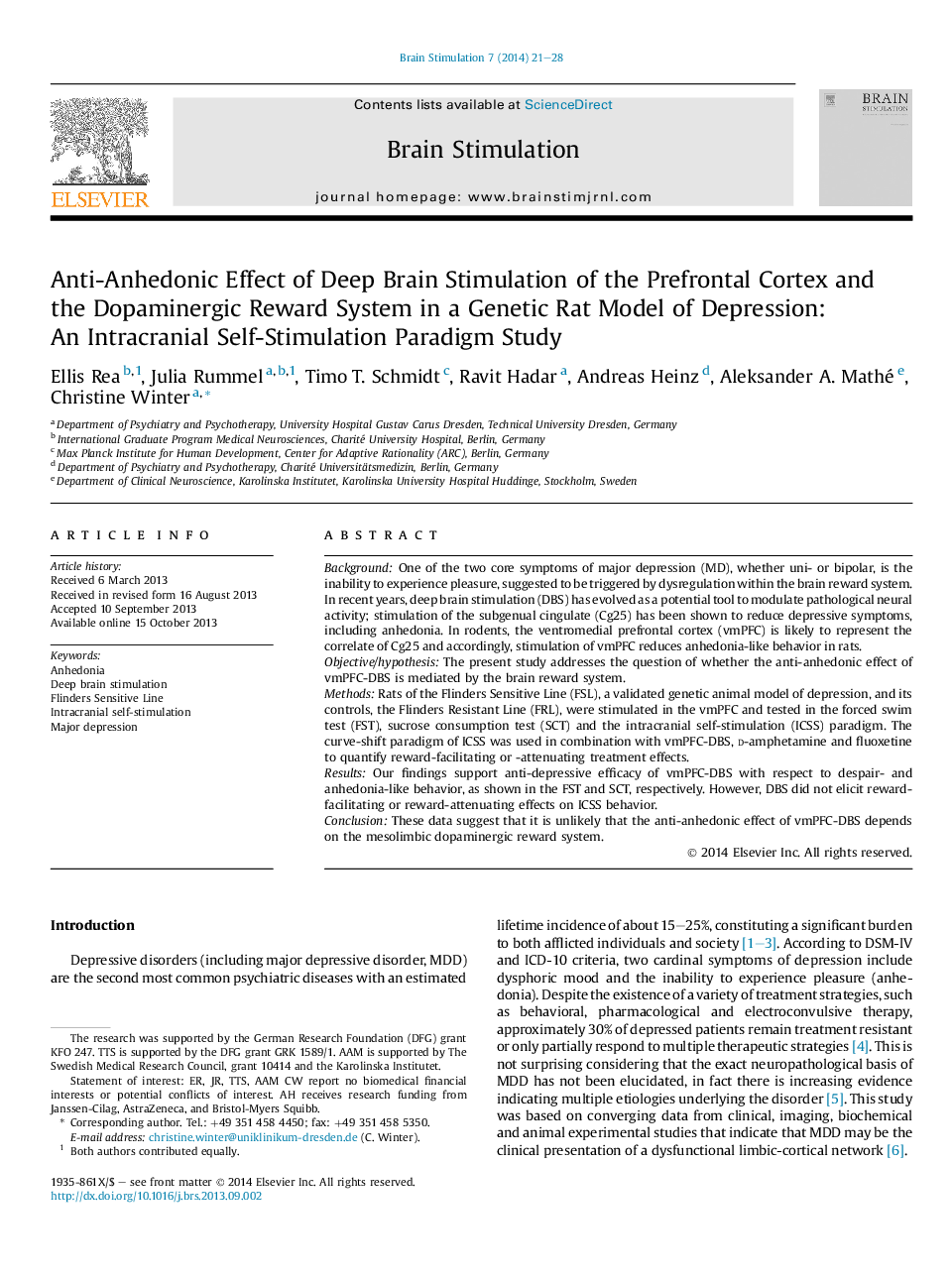| کد مقاله | کد نشریه | سال انتشار | مقاله انگلیسی | نسخه تمام متن |
|---|---|---|---|---|
| 6006242 | 1184678 | 2014 | 8 صفحه PDF | دانلود رایگان |

BackgroundOne of the two core symptoms of major depression (MD), whether uni- or bipolar, is the inability to experience pleasure, suggested to be triggered by dysregulation within the brain reward system. In recent years, deep brain stimulation (DBS) has evolved as a potential tool to modulate pathological neural activity; stimulation of the subgenual cingulate (Cg25) has been shown to reduce depressive symptoms, including anhedonia. In rodents, the ventromedial prefrontal cortex (vmPFC) is likely to represent the correlate of Cg25 and accordingly, stimulation of vmPFC reduces anhedonia-like behavior in rats.Objective/hypothesisThe present study addresses the question of whether the anti-anhedonic effect of vmPFC-DBS is mediated by the brain reward system.MethodsRats of the Flinders Sensitive Line (FSL), a validated genetic animal model of depression, and its controls, the Flinders Resistant Line (FRL), were stimulated in the vmPFC and tested in the forced swim test (FST), sucrose consumption test (SCT) and the intracranial self-stimulation (ICSS) paradigm. The curve-shift paradigm of ICSS was used in combination with vmPFC-DBS, d-amphetamine and fluoxetine to quantify reward-facilitating or -attenuating treatment effects.ResultsOur findings support anti-depressive efficacy of vmPFC-DBS with respect to despair- and anhedonia-like behavior, as shown in the FST and SCT, respectively. However, DBS did not elicit reward-facilitating or reward-attenuating effects on ICSS behavior.ConclusionThese data suggest that it is unlikely that the anti-anhedonic effect of vmPFC-DBS depends on the mesolimbic dopaminergic reward system.
Journal: Brain Stimulation - Volume 7, Issue 1, JanuaryâFebruary 2014, Pages 21-28